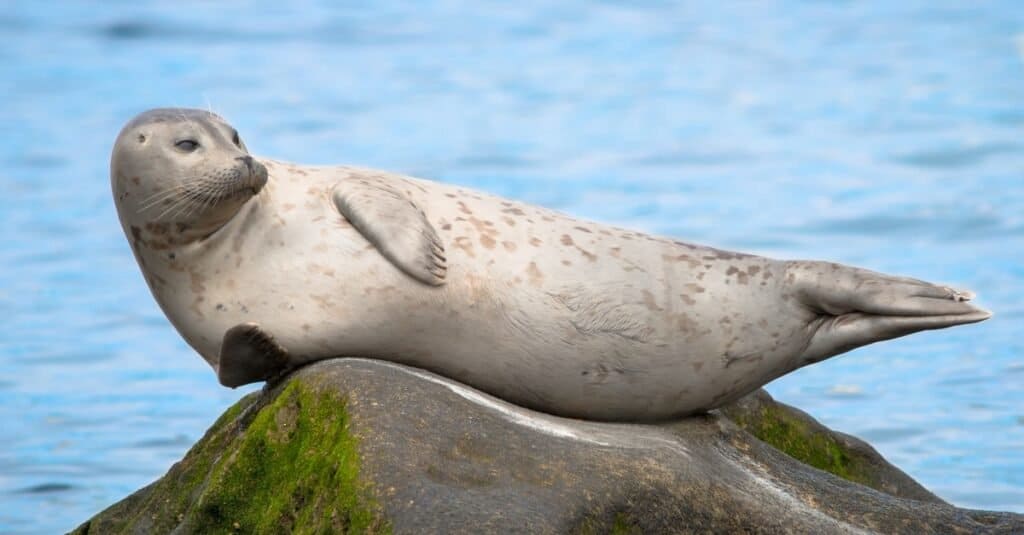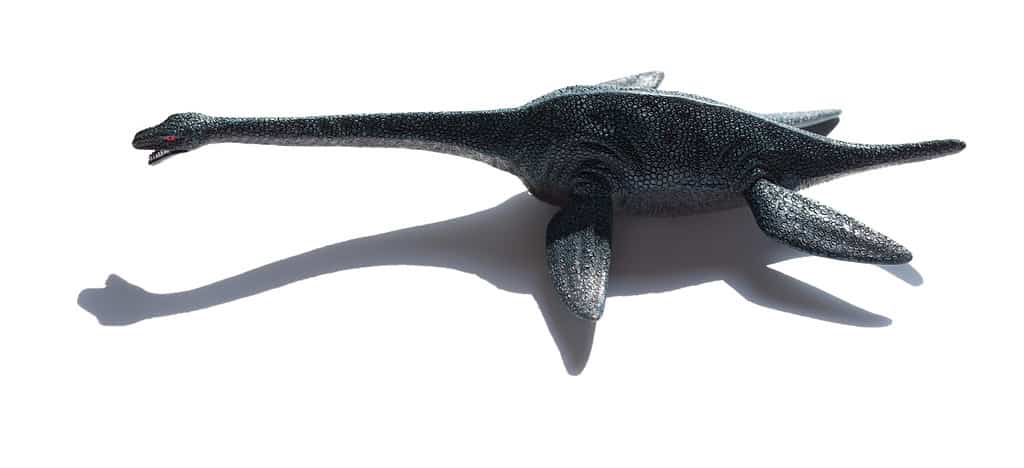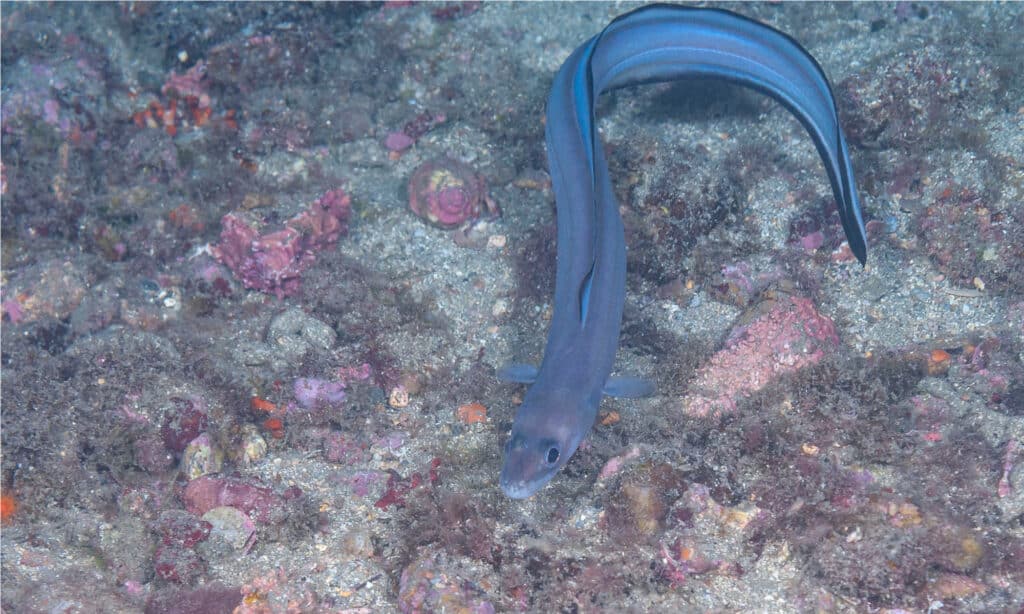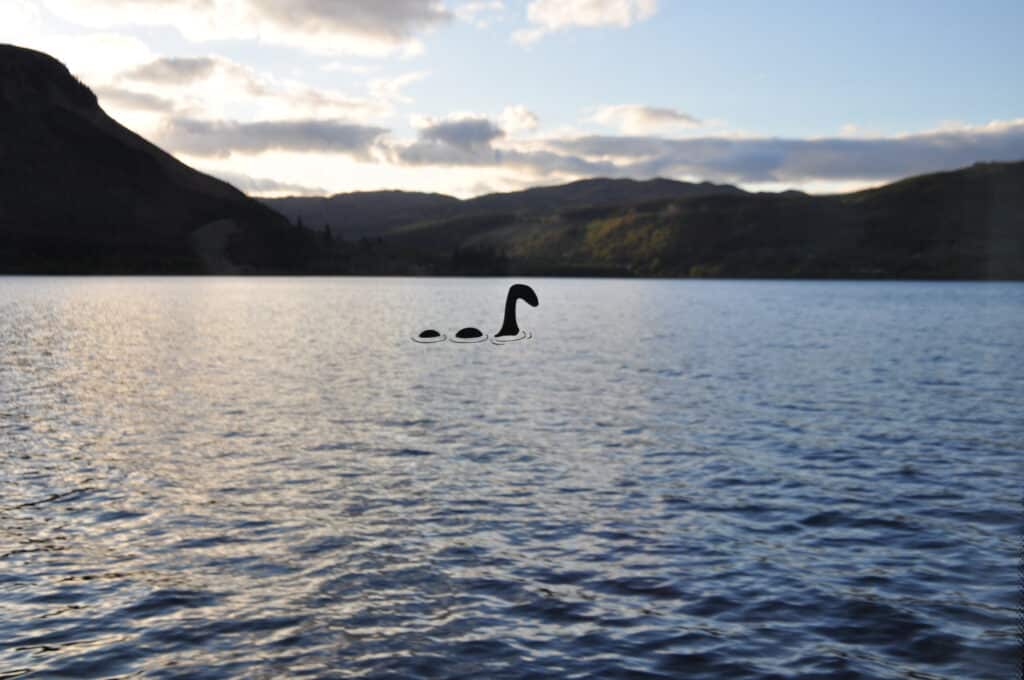The Loch Ness Monster is a mythical creature with a long neck, one or more humps, and a large body. Supposedly, this unidentified creature lurks in Loch Ness in Scotland. People have come up with many theories about the creature’s origins. Today, we’re going to look at the most convincing theories on what the Loch Ness Monster actually is! Learn about some of the ideas that people have concerning Nessie’s origins!
6. Elephant

The Loch Ness Monster might be a picture of an elephant underwater.
©Marmaduke Arundel “Duke Wetherell / PDM 1.0 DEED – License
An elephant is the first theory about what the Loch Ness Monster actually is. People who claim Nessie is an elephant do not think the elephant is in the body of water. Instead, people believe that the pictures of Nessie are a hoax. In that case, someone would have taken the picture of an elephant’s head and its trunk protruding from the water and said it was the picture of a monster taken at Loch Ness. The 1934 picture shows what looks to be a long neck and a large, bulbous body. Could it be the head of an elephant? Perhaps.
5. Driftwood and Downed Tree Trunks

A sunken tree could look like a sea monster.
©Andresyuk Boris/Shutterstock.com
Another possibility regarding Nessie’s sightings is that it’s not a creature at all. Instead, some people believe that the famous creature is actually a very large piece of driftwood or a downed tree trunk. Recent drone footage around Loch Ness shows dark shadows believed to be Nessie just below the waterline. Fallen trees or driftwood could easily explain the large shadows in the water.
4. A Group of Seals

An exceptionally large seal or a group of them could be mistaken for Nessie.
©Dancestrokes/Shutterstock.com
Another one of the most convincing theories on the origin of Nessie is a group of seals. In 2016, a person posted a clear picture from Loch Ness that seemed to show a long, serpent-like creature in the body of water. Upon closer inspection, though, internet denizens found that the “monster” was a group of three seals.
Seals rarely inhabit Loch Ness. As a result, people may mistakenly believe that what they’re seeing is a group of mammals and not a long, reptilian monster. Newspaper articles dating back to 1934 show that scientists have conjectured that seals were responsible for the sightings for several decades. Sometimes, a single large gray seal is mistakenly identified as Nessie. Other times, groups of seals wander into these waters, stirring up new sightings of the famous sea monster.
3. The Last Plesiosaurs

This massive reptile looks how most people imagine Nessie.
©Freer/Shutterstock.com
One of the most famous theories on the origins of the Loch Ness monster is it is a plesiosaur. Plesiosaurus dolichodeirus was an enormous marine reptile that lived between 215 and 66 million years ago. These massive creatures had short tails, thick bodies, flippers, and a very long neck. In fact, the creature seems to be a perfect fit for the Loch Ness Monster.
Plesiosaurs weighed anywhere from 400 to 1,100 pounds, grew between 11 and 40 feet long, and lived in seas around the world. Like the dinosaurs, Plesiosaurus dolichodeirus went extinct during the Cretaceous-Paleogene extinction about 66 million years ago.
Some people saw the Loch Ness Monster pictures and theorized that members of this reptile’s species had endured for millions of years. While the thought may be tempting given Nessie’s supposed size and shape, no efforts have ever shown such a massive creature in those waters.
2. A Giant Eel

European conger (Conger conger) in Granada, Spain. Adults can grow up to 5 feet long or even more.
©Jesus Cobaleda/Shutterstock.com
Another one of the most convincing theories on what the Loch Ness Monster is hinges on the claim that the monster is just a giant eel. While most eels are very small, some species are very large, like the European conger. This species can weigh anywhere from 5 to 50 pounds and grow between 3 feet and 6 feet long.
Exceptionally large European congers can grow up to 20 feet long and weigh over 300 pounds! If one of these monstrous eels was swimming in the famous Scottish body of water, someone could mistake it for Nessie. While some European eels live in the body of water, a recent study showed that even eels over 3 feet long are rare and that one surpassing 20 feet in length would be all but impossible in the waters.
1. A Complete Hoax

A monster is probably not lurking below the waters of Loch Ness.
©iStock.com/Yulia Bogomolova
The final, most likely explanation is that the Loch Ness Monster sightings are a hoax. The pictures could be nothing more than fancy editing or a case of mistaken identity. No large monster is living in Loch Ness, and people only continue to search for Nessie to perpetuate the legend and vie for attention.
So, the most convincing theories on what the Loch Ness Monster is come down to cases of mistaken identity or someone trying to manipulate the masses. One thing is for sure, there is almost certainly no massive reptilian creature living at the bottom of Loch Ness. That will not stop people from looking, though.
Summary of Theories of What the Loch Ness Monster Actually Is
| Rank | Theory |
|---|---|
| 1. | Complete Hoax |
| 2. | Giant Eel |
| 3. | The Last Plesiosaurus |
| 4. | Group of Seals |
| 5. | Driftwood |
| 6. | Elephant |
The photo featured at the top of this post is © Luke Richardson/iStock via Getty Images
Thank you for reading! Have some feedback for us? Contact the AZ Animals editorial team.







